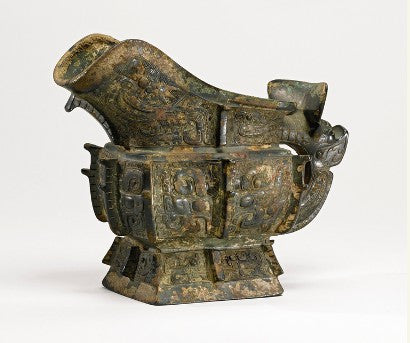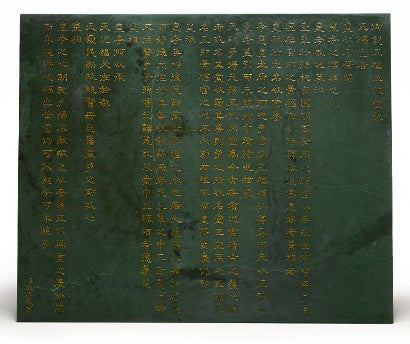A pair of sancai-glazed Tang dynasty (618-907) horses has provided the highlight of Sotheby's two-day auction of Fine Chinese Ceramics and Works of Art, held on September 17-18 in New York.
 Sancai is a type of glazing that uses three or more intermingling colours |
The horses, a spectacular achievement given that they are well over 1,000 years old, sold for $4.2m, making a 68% increase on the $2.5m high estimate. They are prized for both their rarity and age, as well as the glazing technique used to create them.
Sancai is a type of Chinese lead-glazed pottery that incorporates three or more intermingling colours for decoration. This polychrome effect is achieved by using copper, iron and manganese (or cobalt) in the firing, achieving green, brownish yellow and blue tones.
With the establishment of the Silk Road, the technique later became widespread and can be seen in pottery from Syria, Cyprus and Italy among others.
 Ritual wine vessels are coveted as the most impressive surviving objects from China's bronze age |
Also performing well in the sale was a bronze wine vessel from the late Shang dynasty (12th-11th century BC), which made an outstanding 285% increase on its $500,000 valuation to sell for $1.9m.
More ritual bronze vessels were seen at Sotheby's on September 17, as the auction house presented a magnificent single-owner collection, led by a $6.6m example.
 The Qianlong emperor was a great collector and patron of the arts, and items from his court are held in the highest esteem by today's aficionados |
No sale of fine Chinese works of art is complete without an addition from the Qianlong period, which is renowned for its cultivation of the arts under the Qianlong emperor (1711-1799), who was himself a great collector.
Starring from this period was an imperial spinach green jade plaque, which is inscribed with 232 characters filled with gilt lacquer. It sold for $941,000, within its $800,000-1.2m estimate.
Christie's also saw spectacular results in New York yesterday, as the buying frenzy of Asia Week continues.
Sign up to our free weekly newsletter to discover more from the exciting world of collecting.






